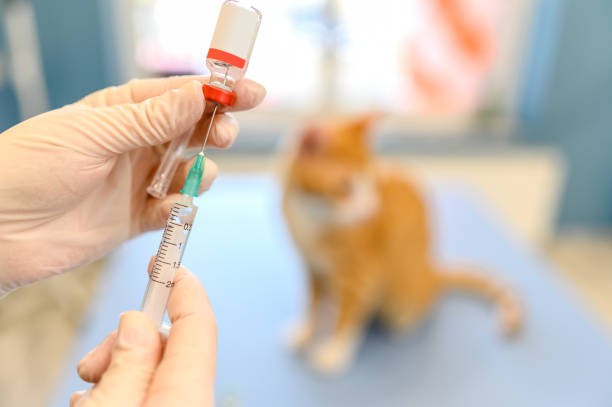Vaccines have revolutionized medicine, saving millions of lives across the world. While vaccines are often associated with human health, they play an equally crucial role in veterinary medicine, protecting animals from a range of infectious diseases. Veterinary vaccine production is a highly specialized field that combines cutting-edge science, technology, and global collaboration to safeguard both animal and public health. In this blog, we’ll explore how veterinary vaccines are produced, their significance, and the innovations that are shaping the future of animal health.
The Need for Veterinary Vaccines
Animals, like humans, are susceptible to various infectious diseases caused by viruses, bacteria, fungi, and parasites. Some of these diseases, such as rabies, foot-and-mouth disease, and avian influenza, can also pose significant risks to human populations, making them a public health concern. In addition to zoonotic threats (diseases that can spread from animals to humans), the economic impact of animal diseases can be severe, particularly in livestock industries where outbreaks can lead to mass culling, trade restrictions, and market instability.
Veterinary vaccines help prevent such diseases by stimulating the animal’s immune system to recognize and fight off pathogens. By doing so, vaccines reduce the incidence of disease, minimize the need for antibiotics, and protect both animal and human populations.
How Veterinary Vaccines Are Made
The production of veterinary vaccines follows a series of highly controlled steps to ensure their safety and efficacy. While the specific techniques vary depending on the type of vaccine (e.g., inactivated, live-attenuated, subunit, or DNA-based), the general process remains consistent across different vaccine types.
1. Antigen Selection and Development
The first step in vaccine development is identifying the pathogen or pathogen component that will stimulate the animal’s immune system. This can involve isolating and characterizing the virus, bacteria, or other microorganisms responsible for the disease. For example, a vaccine for rabies would require the identification of the rabies virus, while a vaccine for bacterial pneumonia might target a particular strain of Pasteurella or Mycoplasma.
In some cases, researchers focus on specific proteins (antigens) produced by the pathogen that are essential for the disease-causing mechanism. For instance, in the case of a viral vaccine, proteins found on the surface of the virus are often targeted. These proteins are key to how the pathogen interacts with the host’s immune system, making them ideal candidates for vaccine development.
2. Antigen Production
Once the antigen is identified, it must be produced in large quantities for vaccine formulation. This can be achieved using various methods, including:
- Cell Culture: In the case of viral vaccines, cells (such as Vero cells for rabies) may be used to grow the virus in the laboratory. The virus is then harvested, inactivated (or weakened), and prepared for use in the vaccine.
- Recombinant Technology: For some bacterial and viral vaccines, genetic engineering techniques are used. Scientists can insert the gene encoding a specific antigen into a host organism (often bacteria or yeast), which then produces the protein. This method is particularly useful for vaccines like the feline leukaemia vaccine.
- Protein Expression Systems: In some cases, the antigen itself is synthetically produced through protein expression systems like bacteria, yeast, or insect cells.
3. Vaccine Formulation
Once the antigen is produced, it is mixed with various substances to help stabilize it, enhance its effectiveness, and improve the immune response. These components, called adjuvants, are added to increase the vaccine’s potency by stimulating the immune system. Common adjuvants include aluminium salts, oil emulsions, or liposomes.
Additionally, preservatives are used to prevent bacterial or fungal contamination, and stabilizers ensure the vaccine maintains its integrity during storage and transport.
4. Quality Control and Testing
Before a vaccine can be released for veterinary use, it undergoes rigorous testing to ensure it is both safe and effective. This includes:
- In vitro and in vivo testing to confirm the vaccine induces an appropriate immune response.
- Stability testing to determine how long the vaccine remains potent under various storage conditions.
- Safety testing to ensure that the vaccine does not cause adverse reactions when administered to animals.
Animal trials are an essential part of the testing process, especially for new vaccine formulations. Regulatory agencies, such as the US Department of Agriculture (USDA) or the European Medicines Agency (EMA), require strict adherence to testing protocols to ensure the vaccine meets all safety standards before it can be distributed to the market.
The Types of Veterinary Vaccines
Veterinary vaccines come in various forms, each suited for different diseases and types of animals. The four main types of veterinary vaccines are:
Live Attenuated Vaccines
These vaccines use a weakened form of the pathogen, which can replicate in the animal’s body but doesn’t cause disease. Live vaccines often provide long-lasting immunity with a single dose. However, they require careful handling to avoid causing an infection.
Inactivated (Killed) Vaccines
These vaccines use pathogens that have been killed or inactivated, making them incapable of causing disease. While they are safer than live vaccines, they may require multiple doses to generate sufficient immunity.
Subunit Vaccines
These vaccines contain only parts of the pathogen, such as specific proteins or sugars, that trigger an immune response without introducing the whole pathogen. This type of vaccine is often used when a more targeted immune response is needed.
DNA/RNA Vaccines
A new frontier in veterinary vaccine development, these vaccines use pieces of the pathogen’s genetic material to instruct cells in the animal’s body to produce specific antigens. This approach has been rapidly advanced due to its success in human medicine with COVID-19 vaccines and is beginning to show promise in animals as well.
Innovations in Veterinary Vaccine Production
As veterinary medicine evolves, so does the technology behind vaccine production. Some notable innovations include:
mRNA Vaccines
Building on the success of COVID-19 vaccines, researchers are exploring mRNA technology to create more effective and faster-to-develop vaccines for animals.
Nanotechnology
Nanoparticles can be used to deliver vaccines more efficiently, increasing the stability and effectiveness of vaccines, especially in challenging environments.
Vaccine Delivery Systems
New methods of delivering vaccines, such as oral vaccines, needle-free injectors, or even edible vaccines, are making vaccination easier and less stressful for animals, particularly in livestock or wildlife settings.
Conclusion
Veterinary vaccine production is a critical field that helps protect both animal and public health. Through sophisticated technologies and extensive testing, vaccines are developed to prevent the spread of infectious diseases, minimize economic losses, and reduce the need for antibiotics. As innovations in vaccine technology continue to progress, the future of veterinary vaccine production holds great promise for even more effective and accessible solutions for the health and welfare of animals worldwide.




